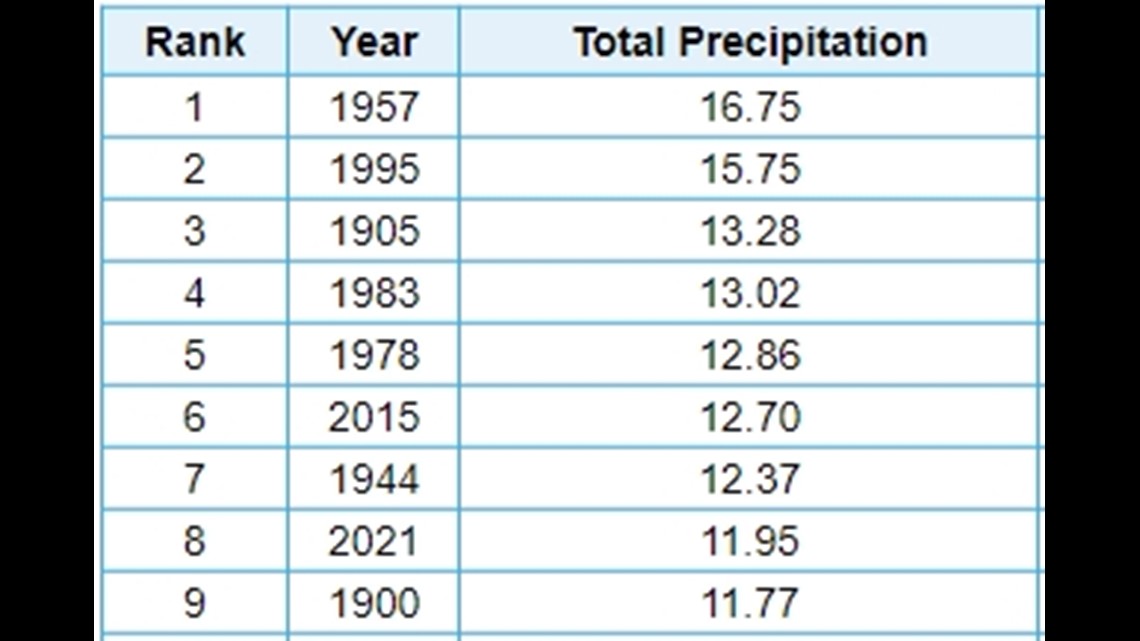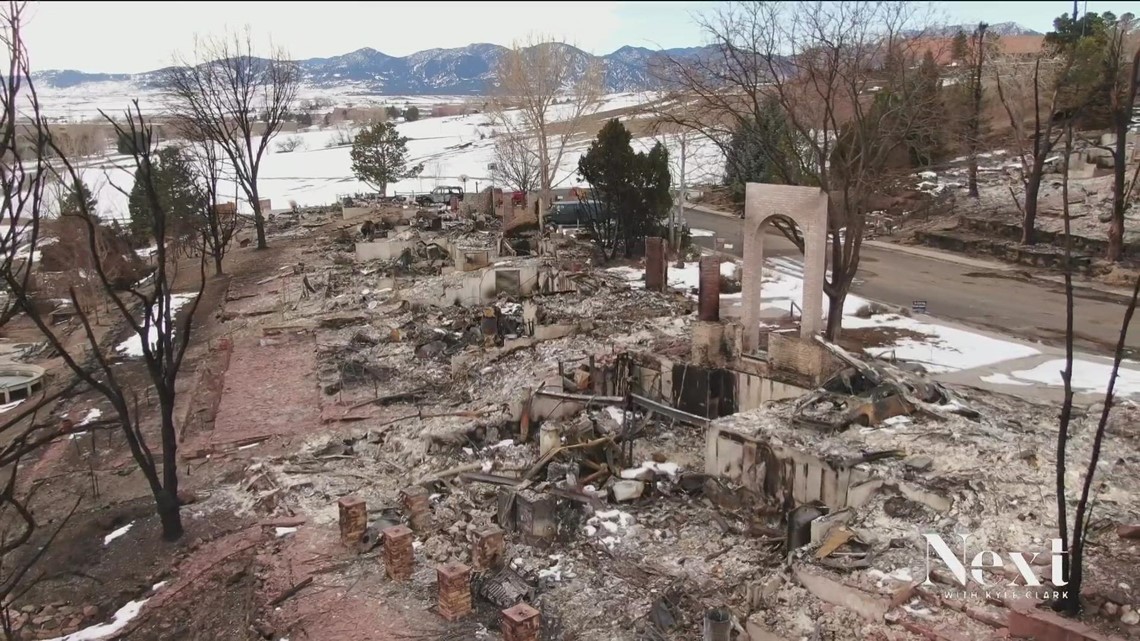BOULDER, Colo. — Investigators for the Marshall Fire said the weather and climate conditions leading up to Dec. 30, 2021, were extreme.
That is true, but what some people might not realize is that those weather conditions are not unusual in Colorado.
"The context of how the weather conditions are being explained to the public has the wrong focus," said Janice Cohen, a fire behavior researcher with the National Center for Atmospheric Research (NCAR). "I think it really misleads people to believe that the Marshall fire can only happen in extreme conditions and that’s absolutely not true.”
Cohen said the focus should be placed on how common extreme weather conditions are in Colorado. And that the uncommon part of the Marshall Fire scenario was that there was a spark at just the wrong place and wrong time which corresponded with common extreme weather conditions.
She potted the precipitation and wind data over the past 100 years and found numerous examples with the exact same weather conditions to the day of the Marshall fire started.
“Climate is important. I don’t what people to think I’m saying that it doesn’t matter," she said. "It’s important in different ways than is being considered and it’s much more complex.”
These are the weather and climate factors leading up to the Marshall Fire:
Wet Spring
The weather ingredients to the Marshall Fire started coming together in March of 2021 with one of the wettest springs on the Front Range. The grasses in particular grew in tall and thick and would become fuel or fire by December.
It was about an average snowpack season from Oct. 2020 to May 2021, but the areas east of the Continental Divide were above average. The precipitation in Boulder from March 1 to the end of May however was 8th most in 129 years.


For context, the spring of 2023 ranked 47th wettest of all time with 8.23" of precipitation. Although in 2023 most of the precipitation fell as rain in May and June, while in 2021 there was several big snowstorms. A 20" storm in March, and a 6-inch and 9-inch storm in April.
Six Months of Drought
Then in July, the weather turned on a dime. The six months leading up to the fire was one of the driest since 2000. An extreme climate factor that would play a role but not as much as you might think.
The official National Weather Service (NWS) station in Boulder only got 4.46" if precipitation over that time period. The 10th driest July 1 through Dec. 29 stretch on record.
While that should be considered extreme weather conditions, Boulder has been that dry or within 1 inch of being that dry 18 times in history, so really not that unusual.
Dead Grass
The Marshall Fire was a grass fire, not a forest fire. Dead or dormant grass is a one-hour fire fuel, which means that it only takes one hour for it to respond to dry conditions and become conducive for fire ignition or fire spread.
So whether it was 180 warm sunny days before the fire or just one warm sunny day, the grass would have been equally as dry and susceptible to wildfire.
The fire ignited in grass at two locations just east of Highway 93 and ran mostly through dead and dormant grass until it reached the more densely populated areas of Superior and Louisville.
The grass dies or goes into a dormant state every December, so this was likely the most common weather condition present in 2021.
"Many times, the grass is covered in snow," said Cohen. "But just about every year there is a stretch of weather in December where the sun comes out for a few days, melts the snow and the ground dries. And that's all it takes."
Once the fire reached the neighborhoods, it transitioned into a type of fire spread that had not been previously studied very much. Instead of spreading through ground litter, grass and trees, it used mostly fences and homes as its mode of fire spread.
It is possible that the urban materials that were getting burned could have been more receptive to fire spread after six months of extremely dry weather compared to just a few days of extremely dry weather.
There is not currently a fuel moisture index that includes homes and fences in the matrix.
High Winds
The 70-plus mile per hour winds were the greatest factor for the spread of the fire and possibly the ignition as well.
But even high winds are not uncommon in Boulder County during the month of December. A database for the weather station at NCAR's Mesa Lab shows a 70-mph wind gust in the month of December in 31 out of the last 55 years.
And there's been at least one 70 mph wind gust, in any month, every year since 1966.
So yes, again an extreme weather condition, but common in Boulder County.
Ignition
There have been fire ignitions in Boulder County in the month of December and even wildfires, but never before has it happened at the right time and place to coincide with the various extreme but common weather conditions on that fateful date of Dec. 30, 2021.
The lesson to take away from this information is not that extreme weather caused the Marshall Fire, but that the extreme weather conditions that led to the fire can happen any time of year, especially November through April when the grasses are more likely to be dead, dormant, or dried out.
SUGGESTED VIDEOS: Marshall Fire Coverage


> Top stories curated daily just for you! Sign up for the 9NEWSLETTER to get can’t-miss stories, Next and Broncos content, weather and more delivered right to your inbox.
MORE WAYS TO GET 9NEWS
Subscribe to our daily 9NEWSLETTER
Download the 9NEWS APP
iTunes: http://on9news.tv/itunes
Google Play: http://on9news.tv/1lWnC5n
HOW TO ADD THE 9NEWS APP TO YOUR STREAMING DEVICE
ROKU: add the channel from the ROKU store or by searching for KUSA.
For both Apple TV and Fire TV, search for "9news" to find the free app to add to your account. Another option for Fire TV is to have the app delivered directly to your Fire TV through Amazon.

